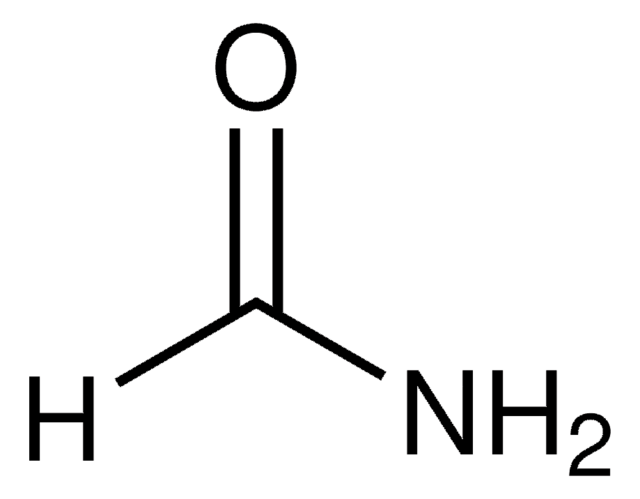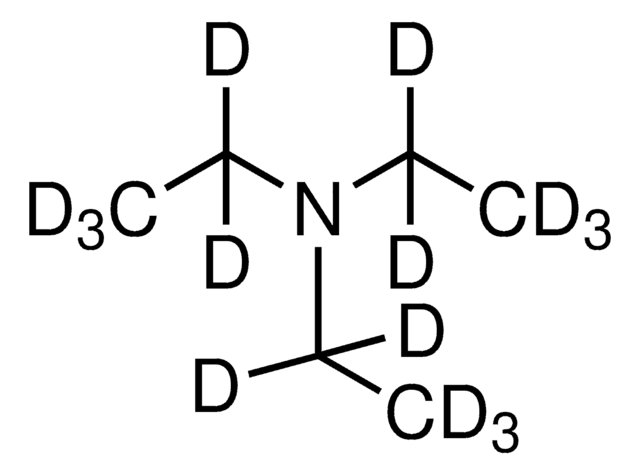8.08352
Triethylamine
for synthesis
Synonym(s):
Triethylamine, N,N-Diethylethanamine, TEA
About This Item
Recommended Products
vapor pressure
72 hPa ( 20 °C)
Quality Level
assay
≥99% (GC)
form
liquid
autoignition temp.
215 °C
potency
730 mg/kg LD50, oral (Rat)
expl. lim.
1.2-9.3 % (v/v)
pH
12.7 (15 °C, 100 g/L in H2O, IUCLID)
bp
90 °C/1013 hPa
mp
-115 °C
transition temp
flash point -11 °C
solubility
133 g/L
density
0.73 g/cm3 at 20 °C
storage temp.
2-30°C
InChI
1S/C6H15N/c1-4-7(5-2)6-3/h4-6H2,1-3H3
InChI key
ZMANZCXQSJIPKH-UHFFFAOYSA-N
Looking for similar products? Visit Product Comparison Guide
General description
Application
- A catalyst in the Domino ring-opening/recyclization reactions of 1,3-thiazolidinedione, malononitrile, and aromatic aldehydes to synthesize polysubstituted dihydrothiophenes.
- A base to synthesize sulfonamides using primary amines and sulfonylating agents.
- A solvent in the Pd-catalyzed cascade Suzuki-Heck reaction.
Analysis Note
Density (d 20 °C/ 4 °C): 0.726 - 0.728
Water (K. F.): ≤ 0.20 %
Identity (IR): passes test
signalword
Danger
Hazard Classifications
Acute Tox. 3 Dermal - Acute Tox. 3 Inhalation - Acute Tox. 4 Oral - Eye Dam. 1 - Flam. Liq. 2 - Skin Corr. 1A - STOT SE 3
target_organs
Respiratory system
Storage Class
3 - Flammable liquids
wgk_germany
WGK 1
flash_point_f
12.2 °F - closed cup
flash_point_c
-11 °C - closed cup
Certificates of Analysis (COA)
Search for Certificates of Analysis (COA) by entering the products Lot/Batch Number. Lot and Batch Numbers can be found on a product’s label following the words ‘Lot’ or ‘Batch’.
Already Own This Product?
Find documentation for the products that you have recently purchased in the Document Library.
Customers Also Viewed
Protocols
HPTLC–MS analysis of quinine in tonic water and caffeine in coffee and cola drinks. Tonic and cola drinks decarbonized through ultrasonication, and coffee extracted through PTFE filter.
Our team of scientists has experience in all areas of research including Life Science, Material Science, Chemical Synthesis, Chromatography, Analytical and many others.
Contact Technical Service









